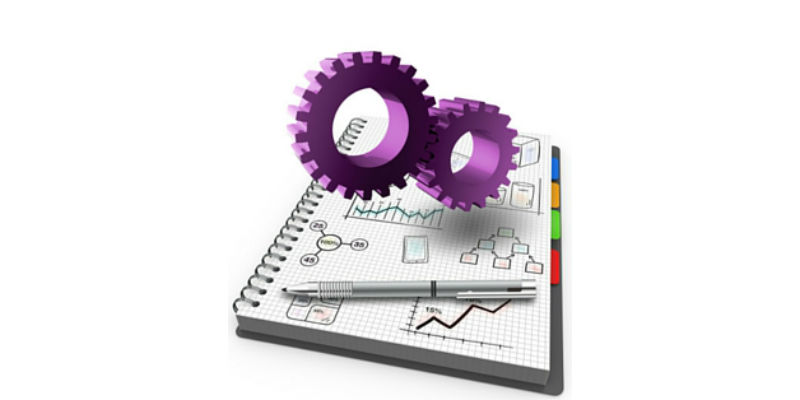
Eva Johnson is an Economist (MSc) and also holds an MBA in Marketing Communications. She has over 10 years of experience in journalism, digital media communication and project management working with several multinational companies and governmental institutions. You will find her blogs posts on a variety of subjects from Agile-Waterfall Hybrid, Scrum to DevOps.
Medical device development is a highly regulated area. To understand the needs of medical device companies, one needs to understand the regulations first.
The FDA and other regulatory agencies have developed standards to ensure that medical devices are developed using mature processes to ensure the safety and reliability of these products. These regulations often require medical device companies to demonstrate complete traceability throughout their hardware and software development lifecycles.
Being compliant with standards is either recommended or mandatory worldwide, and medical device companies have to show how the software design as a whole complies with regulations.
Before the advent of Agile, as traditional, non-agile approaches such as Waterfall were used, medical device companies were able to demonstrate traceability and perform adequate reporting.
Using Waterfall, the development process went through the phases of concept creation / requirements, design, development or implementation, verification, production, and maintenance. Since testing and integration were only involved late in the project’s lifecycle, problems were discovered late.
Medical Device Development: Agile vs. Non-Agile Approach
Medical device companies started to choose Agile over traditional, non-agile approaches to respond to increasing complexity, as well as the need for traceability and compliance with standards.
In contrast to Waterfall teams, Agile teams develop features iteratively with the help of user stories (one of the primary development artifacts that describes a software feature from the perspective of an end user).
Iterative development enables Agile teams to manage requirements, functional specifications and designs collaboratively, with the end users’ needs in mind. As the system evolves, specifications, compliance documentation, and artifacts are constantly revised and updated.
Agile teams can create new functionality after and for each iteration according to the evolving needs of customers. At the end of each iteration, the team demonstrates what they have built. They also receive feedback from the customer that helps them avoid developing outdated features or devices.

Agile enabled Medtronic to respond to changes in a timely manner, while ALM was key for them to ensure traceability and to facilitate compliance with industry standards.
Adopting Cutting-edge Agile Processes While Maintaining Traceability
Medtronic is the world’s leading medical device company. Neuromodulation is the second-oldest and third-largest Medtronic unit, accounting for $1.9 billion, or 11 percent of Medtronic’s revenues in 2014. Medtronic’s Neuromodulation department develops quality products for a highly regulated industry, and as their example shows, it is possible to implement Agile in such a complex environment.
Similar to many medical device companies, the software development team of Medtronic Neuromodulation used to work with different technologies including Java, Android, IntelliJ, Eclipse, iOS, AWS, Silenium, Apium, Docker, Cucumber and Gherkin. They faced challenges of ensuring traceability across this mix of software tools.
In addition, the evolving market environment forced them to accelerate development in order to keep pace with technological challenges in an IoT-based, cloud-connected world. They were relying on a set of processes combining elements from the Scaled Agile Framework, Scrum, Kanban, Object-Driven Development, Test-Driven Development, the Job to Be Done Framework, UX, RUP and TIR 45.
As a company working in a highly regulated environment, Medtronic Neuromodulation had to achieve compliance with different standards including IEC 62304, ISO 13485, IEC 14971 and various FDA regulations.
Medtronic Neuromodulation’s software development team had good tools for managing their internal processes, but they found it difficult to find an integrated software platform that allowed them to manage scaled Agile software development while allowing them to configure processes in compliance with the above standards and regulations. They were looking for a tool that offered this functionality in a single pane of glass solution, allowing them to centrally manage all processes.
Agile enabled them to respond to changes in a timely manner, while ALM was key for them to ensure traceability and to facilitate compliance with industry standards.
The most pressing issues that the Medtronic Neuromodulation team was facing were:
- Traceability of requirements
- Associating work items along the lifecycle
- Document management
- Wiki
- Baselining of requirements
- Test management
- Reporting
- Transparency
Requirements tracing and exporting documentation that needs to be part of a submission to the FDA is often a problem for medical device companies, and this Medtronic team was no exception. They had to capture customer needs and trace them down to product requirements, down to design, tests, and source code.
Technology Changes But Business Needs Do Not
Even as technology advances, the most substantial business needs do not change: Enterprises in all industries want to grow their business and increase their profit. Integrated Application Lifecycle Management (ALM) enables enterprises to replace their siloed IT solutions with a central management platform that allows them to cut the complexity of their IT development projects, and to respond quickly to the evolving needs of users.
While many ALM solutions claim to be fully integrated, most of them actually require plugins to achieve the desired functionality. This leaves users with the challenge of ensuring data consistency by integrating artifacts, wikis, documents, and version control systems.
Once the painful integration process is done, users have to deal with the maintenance of plugins separately. This tends to be extremely time-consuming, and might mean hidden costs – and it still does not guarantee complete data consistency and traceability.
Ensuring data consistency across tools, lifecycle processes and departments is only possible if there is a central repository to manage all the data, and to record all changes on all artifacts. This is a prerequisite to lifecycle traceability, a fundamental requirement of various industry standards and regulations in the medical device sector.
In contrast to single point systems, an integrated, enterprise-enabled ALM solution comes with integrated requirements, development, risk management and QA and testing capabilities to support business needs, traceability and data consistency throughout the entire lifecycle. Therefore, integrated ALM facilitates compliance and supports processes to enhance product quality.


